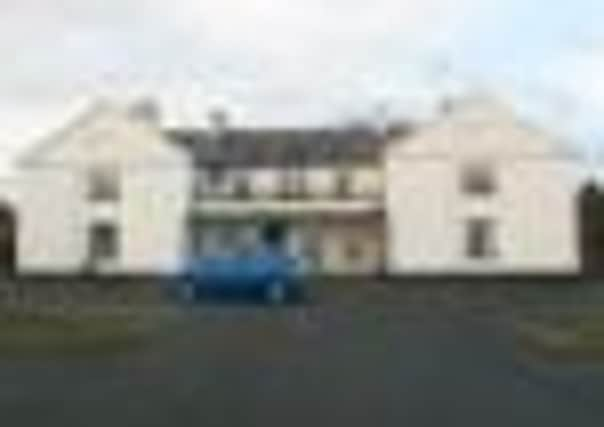Telling the tale of the weaver who became Bard of Kilpike


I was fascinated and filled with curiosity.
Where was Kilpike? What does the name mean?
I know ‘kil’ means old church, but what about ‘pike’? I couldn’t wait to get home to look up my dictionaries of Irish place names.


Alister said he thought Kilpike was an old term for Seapatrick. I found that to be true. The name makes sense as it is site of an ancient church and other place names in the area, such as Kilowen (owen translates as ‘by the river’ Kilowen being ‘the church by the river’), confirm that. The River Bann runs behind the church, but ‘pike’? That was more difficult.
Advertisement
Hide AdAdvertisement
Hide AdI only found one reference, namely ‘pice’, Irish for ‘pike’. My knowledgeable friend, Johnny Dooher, confused the issue by saying pice is Irish for hayfork then asked if there are, or were, any pike in the river?
He wondered if the original name had been Anglicised? If anybody has any knowledge about the origin of the name ‘Kilpike’, and its exact boundaries I’d be grateful to be enlightened.
According to friends who have lived in Banbridge all their lives Kilpike has changed to Seapatrick within living memory.
Names do change over time. Banbridge was once called Ballyvally. In 1712 a bridge was built over the River Bann hence the name. Why did Kilpike change? Does anybody know?
Now, what about the bard himself?
Advertisement
Hide AdAdvertisement
Hide AdThe Bard of Kilpike was a weaver called Joseph Carson. He was born in Lurgan before moving to Banbridge where he lived, worked and wrote. He published a book, ‘Poems, Songs and Satires’ in 1830, which contains many references to Banbridge and the people living there at the time.
Joseph poems are in the Ulster Scots dialect so he belongs to the group known as the ‘weaving poets’. There was no compulsory National System of Education until 1831, that is until after his book was published. He said he lacked a decent education because he was never went to school once he reached the age of 10 years, with the exception of five weeks when he attended a school in Banbridge. By this time he was married.
Weaving was not properly industrialised in the early 1800s being mainly a cottage industry. I imagined Joseph sitting at his loom in his cottage, weaving away and making up poems to the rhythm of his shuttlecock. Did he learn them off by heart? Could he read and write? Or did somebody else write them down for him? Obviously I needed to do some research and a visit to the Irish Library in Armagh was required so away I went.
Armagh’s Irish Library is a pleasant place. I prefer it to The Public Record Office because although there is a smaller collection the staff are so helpful. It was once an old hospital and has an atmosphere which feels steeped in local history. lt also has an extensive free car park. I had an interesting morning and this is what I found.
Advertisement
Hide AdAdvertisement
Hide AdUntil the Act of Catholic Emancipation of 1829 it was illegal to be educated unless you belonged to the Anglican Church. (The act applied to Presbyterians, Methodists and so on as well as Roman Catholics). Children and teachers willing to risk indulging in educational pursuits hid in the remote areas, among rocks, behind hedges and so on, these schools becoming known as Hedge Schools.
Punishments were severe if you were caught so lookouts were employed to warn the class of approaching danger. Originally the Hedge Schools had very good reputations which were lost over the passage of time. Some existed long after the Act of Catholic Emancipation until well into the 1850‘s, by which time they had become dissolute institutions with unruly pupils and teachers who could be drunk and riotous.
Churches had Sunday schools and there were a few organisations such as ‘The Society for the Discountenancing of Vice and Promoting the Knowledge and Practice of Religion and Virtue’, The Kildare Place Society and the Lancasterian Schools which aimed to educate people and possibly make them virtuous as well! There were also some individuals who ran schools.
There weren’t any suitable text books. Children were taught to read using the Bible, or whatever other material their tutors had, such as ‘The Life and Works of Moll Flanders’ although some official educational establishments, such as The Kildare Place Society’, did publish children’s books. The language in these books is so difficult I found difficulty in reading and understanding them.
Advertisement
Hide AdAdvertisement
Hide AdAccording to Captain Richard Linn a ‘superior school’ was established in Banbridge by Mr. James Withers in the late 1700s. The Rev. James Davis M.A. conducted a ‘Classical Academy’ during most of the time he was the incumbent of Bannside Presbyterian Church. (1814-1847). A Lancasterian School was set up on 5th October 1815 in the upper storey of the Old Market House, prior to building a new school, in Church Street, which opened in 1826. The building still exists. It has been turned into apartments in Lancaster Court.
Joseph Carson said he had every reason to revere a local woman, Mrs Alexander McCaw, of Greenhill near Banbridge. She got books for him, taught him to read, corrected his pronounciation and explained the meaning of words he didn’t know.
He said he ‘practised every evening, for a winter season, after the labours of the day were over.’ The result is he is he produced a creditable amount of work and is remembered as The Bard of Kilpike. Fascinating! I’d love to know more about him.